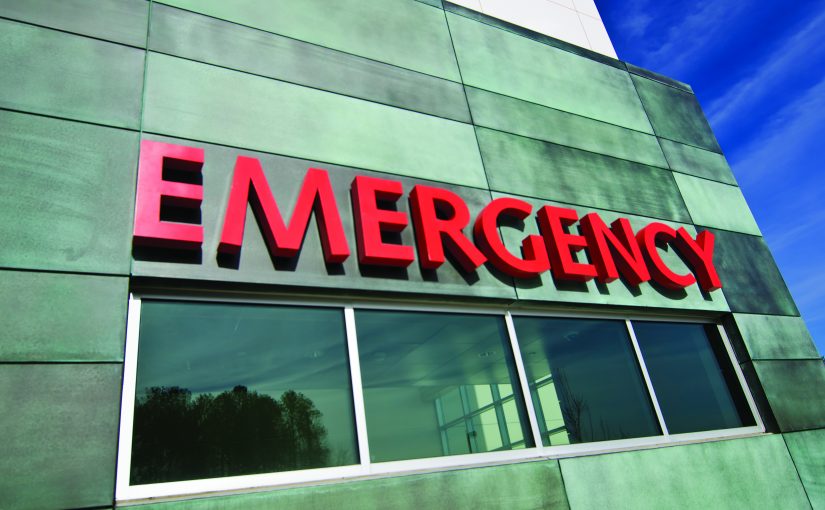Self-administered first aid kits or trauma kits have become standard officer-issued equipment in recent history. These kits enhance officers’ capability to save lives—their own or other persons—who have injuries caused by gunshots or other significant wounds. There are numerous accounts of these kits’ effectiveness and the President’s Task Force on Policing in the 21st Century recommended the kits be standard officer equipment. A normal progression from administering those first aid measures would be transporting the injured person from the scene to a hospital or medical center to receive further aid. The question for administrators, trainers, supervisors, and officers is there wisdom to waiting for emergency medical services (EMS) to arrive on-scene. The research indicates that waiting for EMS is not necessary, nor does transportation by ambulance significantly affect survival rates.
Relevant Research
Policing in the United States occurs in many differing environments: urban, rural, and wilderness. Naturally, these environments have differing levels of EMS care availability. Studies of trauma survival show that there is a golden hour (the first 60 minutes after an injury is inflicted) during which medical aid can improve the chances of survival.1 Conceptually, the premise of definitive trauma care being greatly improved when initiated within this 60-minute window has existed for three decades in trauma systems and EMS systems. However, these studies concluded there was no definitive support for EMS intervention during the golden hour in terms of survival rates. For those making on-scene medical decisions, other findings and lessons are questioning the benefit of out-of-hospital advanced life support practices in trauma patients. That is not to say there is reason to disregard the importance of certain EMS interventions in particular circumstances that may contribute to survival; instead, a 2010 study by professor of emergency medicine, Dr. Craig Newgard, and his fellow researchers found that fast applications of EMS intervention might not have a measurable effect on survivability for patients, and, for those patients, it is more important to quickly get them to a hospital for advanced intervention than it is to initiate EMS care for them on the scene. This study tells the police officer and supervisor on the scene of a trauma injury event that the golden hour is not EMS dependent, even when viewed in the context of the advanced life support measures EMS can provide. The golden hour relates to the survival and care provided in a hospital environment.
As any competent medical doctor or surgeon knows, some trauma victims will not survive regardless of the interventions or aid they receive. Similarly, some trauma victims will survive whether they have medical intervention or not. Those trauma victims who do need a medical intervention are those who are of most concern in the context of this review. It is those trauma victims who need immediate intervention who will also need a hospital environment treatment to ensure survival. In 2013, researchers published a study examining the survival of victims of penetrating thoracic (i.e., chest) injury, primarily gunshot wounds, that supports the conclusion that hospitalization is the deciding factor for many trauma victims.2 This research concludes that there is increased mortality for victims of penetrating thoracic injuries with any increased total pre-hospital time and that less time in a pre-hospital environment does in fact improve a patient’s chance of survival. Without the benefit of extensive medical training, the police officer or supervisor on the scene has little ability to differentiate between which patient is likely to survive or not and who needs prompt hospital intervention, but these findings indicate that waiting for EMS might not be advisable for victims of trauma. It might, instead, be more important to quickly get the victims to the hospital, even if an ambulance has not yet arrived.
One argument that might be encountered when considering non-EMS transport as a policy is the level of care provided in an ambulance verses the seat of a police car. A recent study examined more than 25 years of practice and policy by the Philadelphia, Pennsylvania, Police Department to “scoop and run” with gunshot or stabbing victims. The study from the Perelman School of Medicine at the University of Pennsylvania found no significant difference in survivability for gunshot wound trauma victims transported by EMS verses those transported by the police via the “scoop and run” method.3 In fact, when trauma victims are transported by police, the quick transfer to hospital care increased survivability. Police officers and supervisors can find comfort knowing that getting the victim to the hospital is the most pressing need, but providing a level of first aid, such as that provided with self-care type trauma kits can be beneficial to survivability. Police managers should consider providing a certain level of basic emergency first aid care training to officers in the field if the current training regimen does not already include it.
Conclusion
What can be concluded from this research is that equipping police officers with trauma kits to provide hemorrhage control and training in basic life support measures such as airway support to be a sensible policy for law enforcement agencies. Those skills, in conjunction with a policy of quick transport from the scene to hospital care will be effective in ensuring the survival of officers or civilians with gunshot wounds or similar traumatic injuries. Police officers and supervisors deciding to expedite transport of the victim from the scene without waiting for EMS are supported in their resolution by the available research.
Notes:
1Craig D. Newgard et al., “Emergency Medical Services Intervals and Survival in Trauma: Assessment of the ‘Golden Hour’ in a North American Prospective Cohort,” Emergency Medical Services/Original Research, Annals of Emergency Medicine 55, no. 3 (March 2010): 235–246.
2Mamta Swaroop et al., “Pre-hospital Transport Times and Survival for Hypotensive Patients with Penetrating Thoracic Trauma,” Journal of Emergencies, Trauma, and Shock 6, no. 1 (2013): 16–20.
3Roger A. Band et al., “Severity-Adjusted Mortality in Trauma Patients Transported by Police,” Annals of Emergency Medicine 63, no. 5 (May 2014): 608–614.



